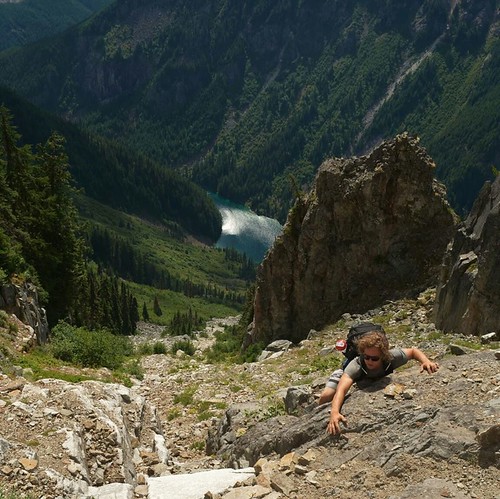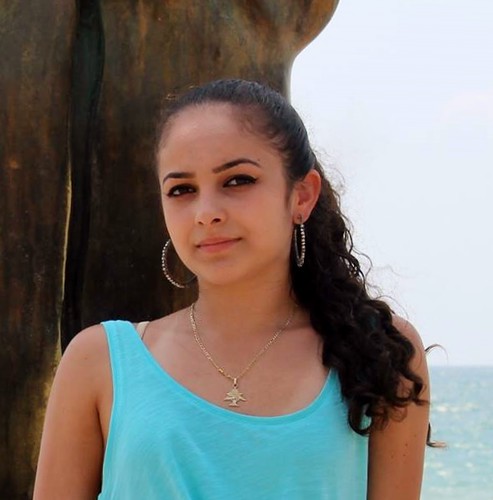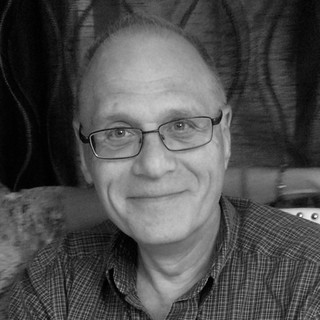Dave Harper is an Instructor in the Ecological Restoration Program who has returned to BCIT after years of working in the field, writing reports for municipal districts about habitat restoration. He talked to us about how events in his life brought him to this path, and what he likes best about being back on campus:

Seymour Restoration
Photo by Chris Kimmel
When we moved into a suburb of Trail when I was 12, I taught myself how to fly-fish on the Columbia River. Fishing has been a part of my life ever since. Years later when I moved to Vancouver, I learned of the deteriorating state of not only the local fishery but the environment in general. Having grown up in Trail, a largely resource extraction driven economy (where caring for the environment was a mere afterthought) I found learning of the environmental deterioration disturbing. I was taking computer programming at Kwantlen College, but by chance took an Environmental Science course to fulfill a student loan requirement, and my career path started to change. Then a friend took me fishing, which we were able to do while he was being paid to survey for Harlequin Ducks in the Skagit River valley. Between the environmental course and the type of work available, my career path suddenly took a different route.
I enrolled at BCIT and graduated from the Fish, Wildlife and Recreation diploma program (co-op option), and completed an advanced diploma in Renewable Resource Management. Through the co-op aspect, I worked with Ducks Unlimited one summer, as a park ranger with the Fraser Valley Regional District the next, and finally with the BC Conservation Foundation (BCCF) working on the Greater Georgia Basin Steelhead Recovery Program. I had found my niche.
After a couple years I managed my first stream habitat restoration project and soon learned that adaptive management and contingency planning are paramount to conducting this work. I had been working for several years for BCCF when I returned to BCIT to take the Environmental Engineering degree program (I am months away from completing this degree).
Still at BCCF and starting to look for work, Ken Ashley, director of the Rivers Institute and instructor in the Ecological Restoration (ER) degree program invited me to demonstrate to his class the log and rock drilling used to improve freshwater habitat conditions for fish. I was subsequently offered a job at BCIT, half-time as an Assistant Instructor in the ER program and half-time in the Rivers Institute. I was excited but a tad apprehensive.
After three years at BCIT, I can honestly say that I will retire here. I work alongside some of the most passionate, skilled and dedicated colleagues in the quest to train the next generation of environmental stewards. Through my role as project manager in the Rivers Institute, I still write proposals, manage projects, work with industry, government and NGOs, and am able to employ current and past students in conducting valuable habitat restoration projects. Through grant writing and partnering with outside organizations, I have led or co-led the successful completion of more than a million dollars in habitat restoration, largely the estuaries along the North Shore of Burrard Inlet.
At the Seymour River estuary we installed and anchored more than 170 trees to boulders while modifying the substrate to improve the quantity and quality of available habitat by mimicking natural processes. Through the work just completed at the Lynn Creek estuary, 35 past and present students were hired for the aquatic and riparian habitat improvements, providing real-world, meaningful, hands-on learning.
And his advice for future graduates? Protect the planet, it is the only one we have. This does not require a massive alteration to your lifestyle but merely making good choices were applicable and available as consumers. The saying that many hands make light work applies here. More and more people choosing a more ‘green’ direction will ensure the world persists. This will become increasingly more important as the state of life-enabling systems on Earth continue to weaken.
A list of Dave’s publications can be found at the Rivers Institute.
 Name: Clark Friesen
Name: Clark Friesen
